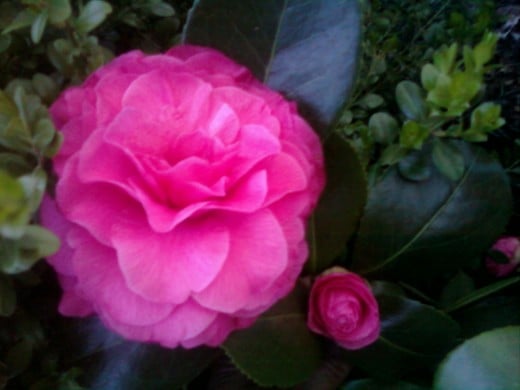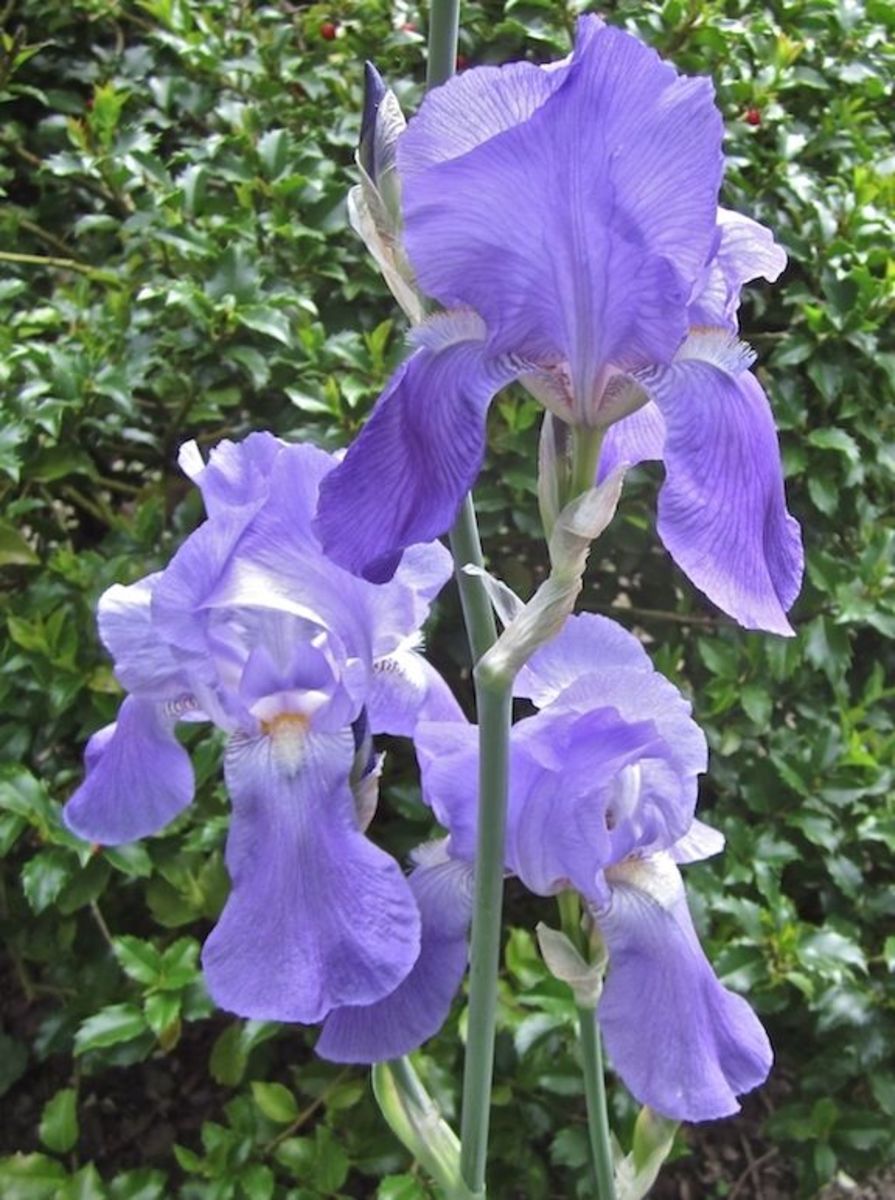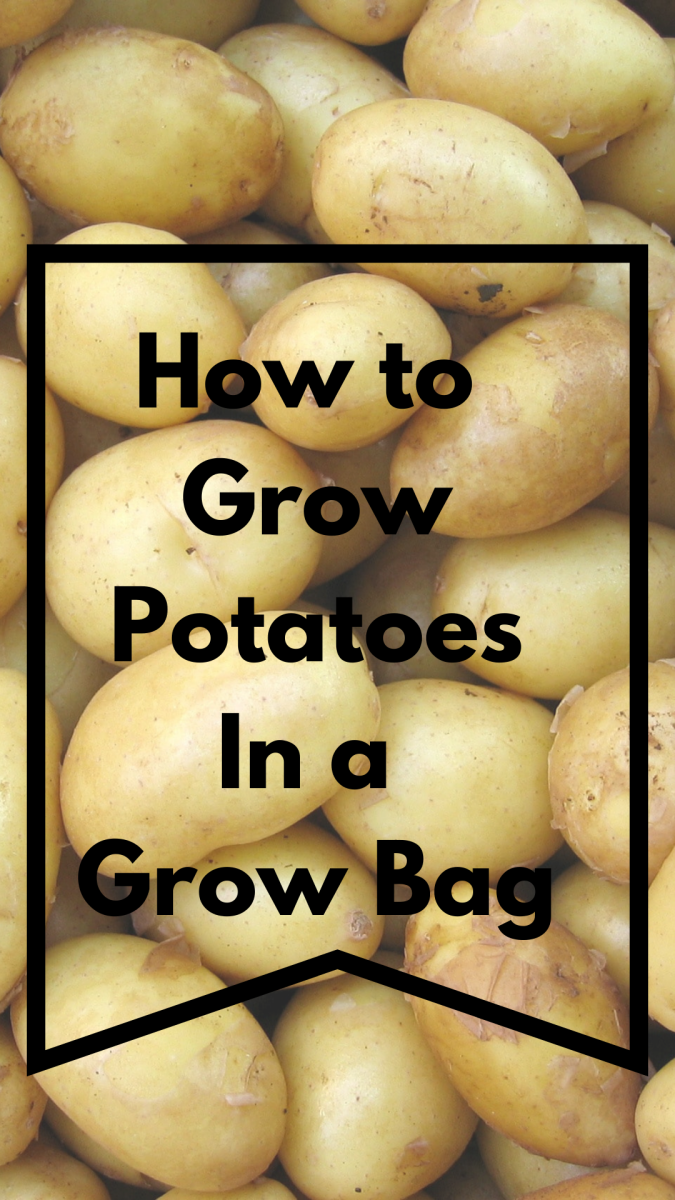Camellia: Japanese Rose Up Close with Folklore of Calyx Unraveled
Camellias Speak Love in Flowers' Language
There is something just a little more intrinsic about the camellia called Japanese rose. Camellias are often translated flaming love in the language of flowers. Unlike most flowers, the calyx falls right along with the petals after blooming, and this is said to represent an everlasting union between lovers in Chinese folklore. Camellias have long been used as a token for showing devotion by young lovers, as the petals reflect the lady and the calyx represents the man who has been entrusted to protect her. In this poetic analogy, the man does hold her and protect her from life right into death. It's no wonder that Chinese offer this beautiful flower in a tale of love because they were developed there and then more later in Japan, thus the name Japanese rose. Actually, I learned that the name camellia is from a Jesuit Priest by the last name Kamel. Camellias were introduced in Europe in 1792 and into the USA in 1820. They were mainly found in gardens in the Southeast, Gulf Coast, and in California early on in this country. These hardy evergreen shrubs prefer slightly acid, humus rich soil, and remain attractive all year long.
.
Variations on a Blooming Theme
Some of the more common types of camellias are the Sasanqua, Sinensis, Japonica, Reticulata, Common Tea, Winter Blooming, and Fall Blooming. The typical blooming season is from October to April in this region. Camellias like a cooler blooming season, and they simply do not stand up very well to high heat. So I guess the one in my front yard is a "shero;" although, it does get some shade. Some different varieties include single row with not more than 8 petals, semi-double with 2 or more rows of petals, anemone with outer rows of petals with center convex of petaloids and stamens. There is also the peony, which some may not realize is actually a camellia. They are gorgeous with a convex mass of petaloids intermingled with stamens. The rose form double shows stamens in a concave center, and the formal double has many rows of petals but never shows any stamens.
Glorious Camellias
The striking beauty of a camellia in my own garden intrigued me to find out more about these fine flowers. The symmetry of this flower is remarkable, along with sharp contrast between the rich dark green leaves and the brilliant colors of the flower petals and stamens. I have dubbed the camellia queen of the garden, at least over what I have in my yard, and that does include a favored double delight rose that looks and smells wonderful.

Camellias Featured in Symbolism
I just stepped into a world of camellias, and came back with a little more appreciation for what I have, and I think I just added more flowers to my wish list. A friend gave me pink peonies from her garden once when I was not feeling well. I had never seen any flowers so playful and elegant-looking all at the same time. Maybe she can help me clone from hers because she is quite a gardener. She will be happy I asked, since she has so much appreciation for all things homegrown. Anyway, now when I think about how the petal and calyx die together after blooming,I will know why. I used to think something was wrong with the camellia I have. Now I have learned the symbolism from the camellia's life that it is just an eternity in love!
Home Gardeners and Experts Share Camellias
Gardeners must be naturally generous. Many are willing to share their know-how and their plants and, if you're really lucky, sometimes their muscle behind the shovel right with you. On that account, there are 4 different ways that can be used for propagation of camellias. For the typical home gardener, there is a simple way to propagate these flowers by air layering. In this manner, roots form while still attached to the mother plant, and a clone is formed. This is not mad science. It's really like sharing. There is grafting for the more experienced gardener, in which plants can be produced. There are cuttings used by commercial growers, and then seedlings used for new varieties over a long period of time. For more information about growing tips and propagation,you can visit the American Camellia Society. They have free downloads to help you get started growing or propagating your own camellias, not to mention the amazing photo galleries from shows, and so forth. You may just find a beauty you want in your garden too!
Some Other Helpful Links
- Trehane Nursery - The Camellia Specialists
Trehane Nursery is a family run business that has been growing Camellias, Azaleas, Pieris, Magnolias, Dwarf Rhododendrons and, of course, Blueberries in south Dorset for nearly 50 years. Our range of Camellias is unsurpassed. We grow over 150 differe - CamelliaShop.com
Camelliashop.com is your online souce for Tea Plants, and other fine camellias. We carry the latest variety of fragrant camellias, everblooming camellias, yellow camellias, winter blooming camellias, fall blooming sasanqua and japonica plus many hybr - Learn2Grow: Home and Garden, Outdoor Living, Garden Deals, Garden Community & More
Learn2Grow is an outdoor living resource that makes your home and garden decisions easier, through expert advice, a friendly community and the garden marketplace. - Camellia Forest Nursery - Camellias shipped to your door!
Camellia Forest Nursery is a retail and mail order source for the gardener shopping for Camellias, Tea Plants, and unusual Trees and Shrubs from Asia. David Parks, owner, breeds and propagates cold hardy Camellias. - Chesapeake Home
The Mid-Atlantic's House and Garden Magazine - CSPV Home Page
CSPV Home Page - Sussex Camellias and Alpines RHS Gold Medal Winners
- Brighter Blooms Nursery | Buy Shrubs Online | Read Reviews
Offering fast growing trees, shrubs, perennials and rose bushes that are perfect for your area. Click here to view the huge selection from Brighter Blooms Nursery.
- National Cherry Blossom Festival--History Announcing Spring 2010
After such a cold and snowy winter, one could only delight in the sight of cherry blossoms. They are right on time. The National Cherry Blossom Festival is running this year from March 27-April 11, 2010. This...



